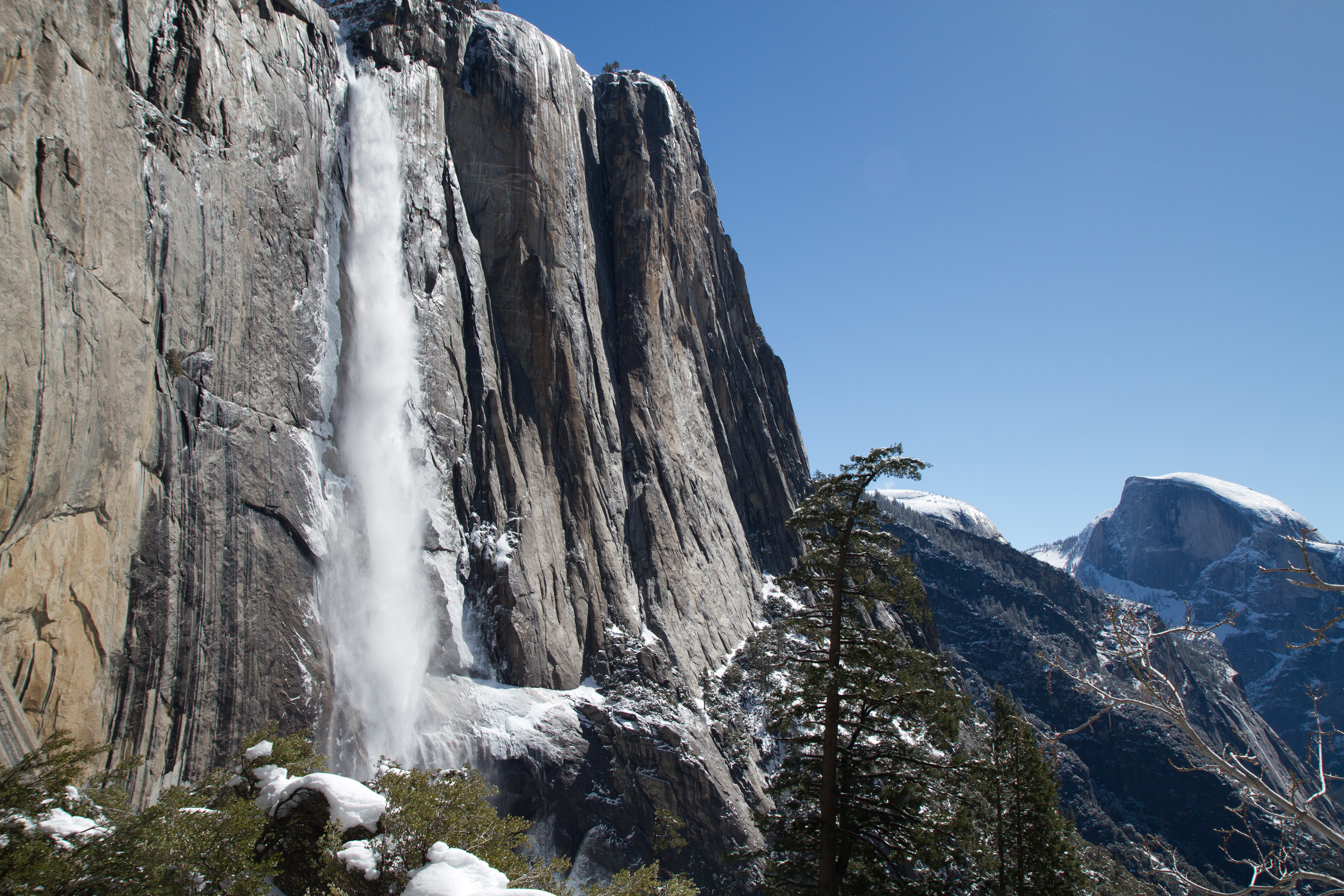Hovering between Winter and Spring, April gives Yosemite visitors a wonderful mix of weather. During the four days I visited, the temperature ranged from the 20s to the 60s (all temperatures Fahrenheit) with the weather fluctuating from sunny and clear to cloudy and snowing.
 |
| RT-140 heading towards the valley |
The indescribable beauty of Yosemite becomes readily apparent during the long drive into the valley. With the old growth forest to your left and the wondrous vistas to your right, spectacular is the only way to describe the drive.
 |
| "Tunnel View" (RT-140) |
In Yosemite, besides admiring the mountains, visitors should be on the lookout for animals of all kinds. I watched as a pair of deer grazed, unseen, not 30 feet from the Visitors Center; all eyes fixed upwards at the falls.
 |
| Yosemite Falls |
Similarly, while hiking the Valley Loop Trail, I watched a black bear saunter in the opposite direction, not 20 feet from me; either ignorant of, or unimpressed by, my existence. Likewise, as I was leaving the park, I watched a solitary coyote trot along the edge of the RT-140.
 |
| An obscured Yosemite Falls from the Swinging Bridge |
I stayed in Curry Village, a grouping of canvas tent cabins (canvas walls over a wooden structure. Heat is optional, but recommended for an April stay). The accommodations are simple: a cot, blankets, towels, and shared facilities. The experience is unforgettable; The first night I fell asleep to the pitter-patter of rain changing to snow. The second night, I witnessed a waterfall of snow (avalanche) off Glacier Point, the summit that looms behind Curry Village.
|
 Upper Yosemite Falls and Half Dome, as seen from the Upper Falls trail. Upper Yosemite Falls and Half Dome, as seen from the Upper Falls trail. |
If you only have one day, the views in and out of the park, Lower Yosemite Falls, and the Valley proper will last a life time.
If you have more time, I strongly suggest the Upper Yosemite Trail. The hike is not an easy one, especially in April, but the views are worth it. My only tip: if you struggled to reach Columbia Rock, continue to "the gate." The views of Upper Yosemite Falls from that point make any the suffering worth it.
 Sunday, August 22, 2010 at 1:06PM
Sunday, August 22, 2010 at 1:06PM 



 fred |
fred |  Post a Comment |
Post a Comment |  Glacier National Park,
Glacier National Park,  hiking,
hiking,  montana,
montana,  photo in
photo in  hiking
hiking 


















